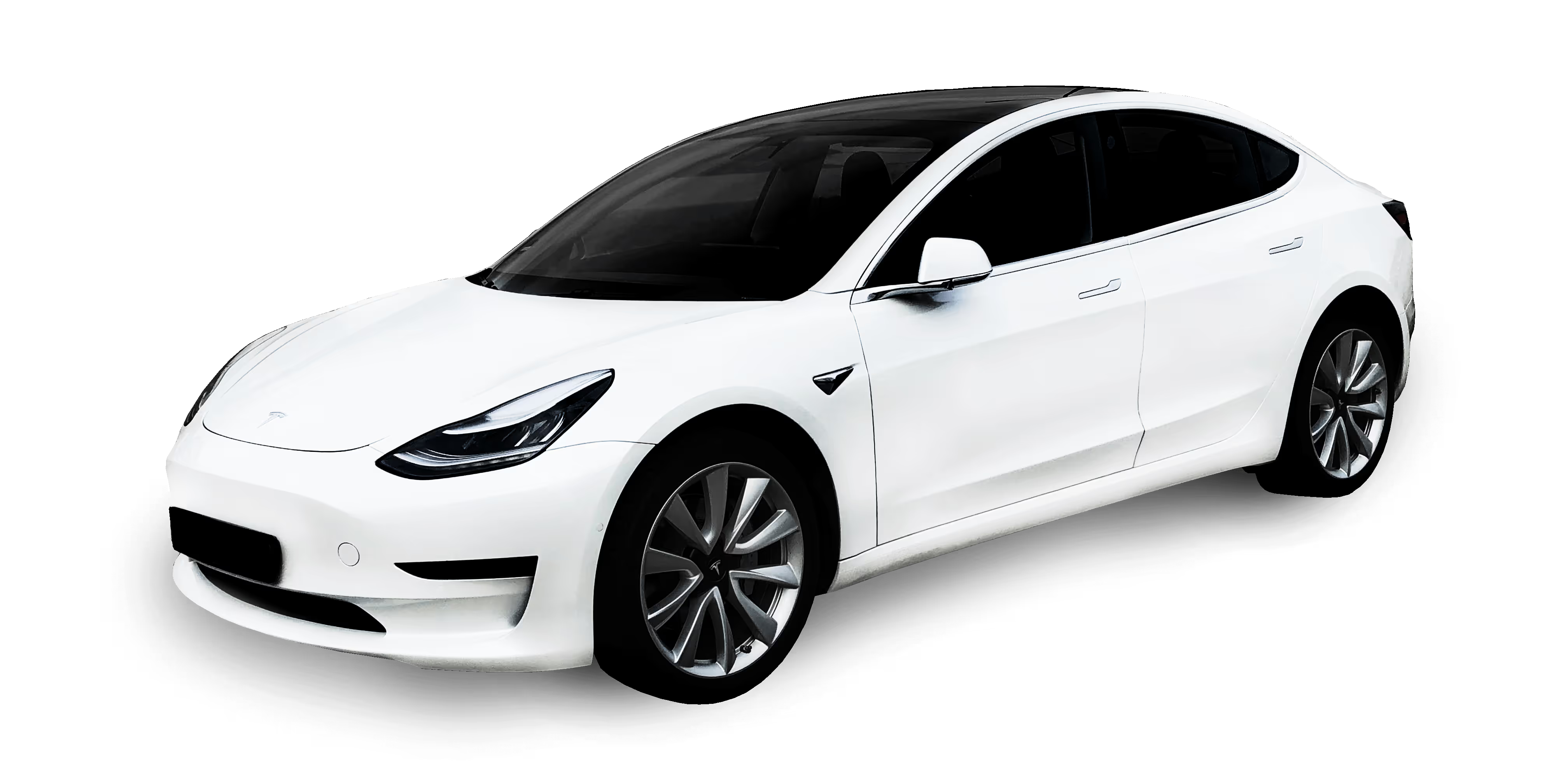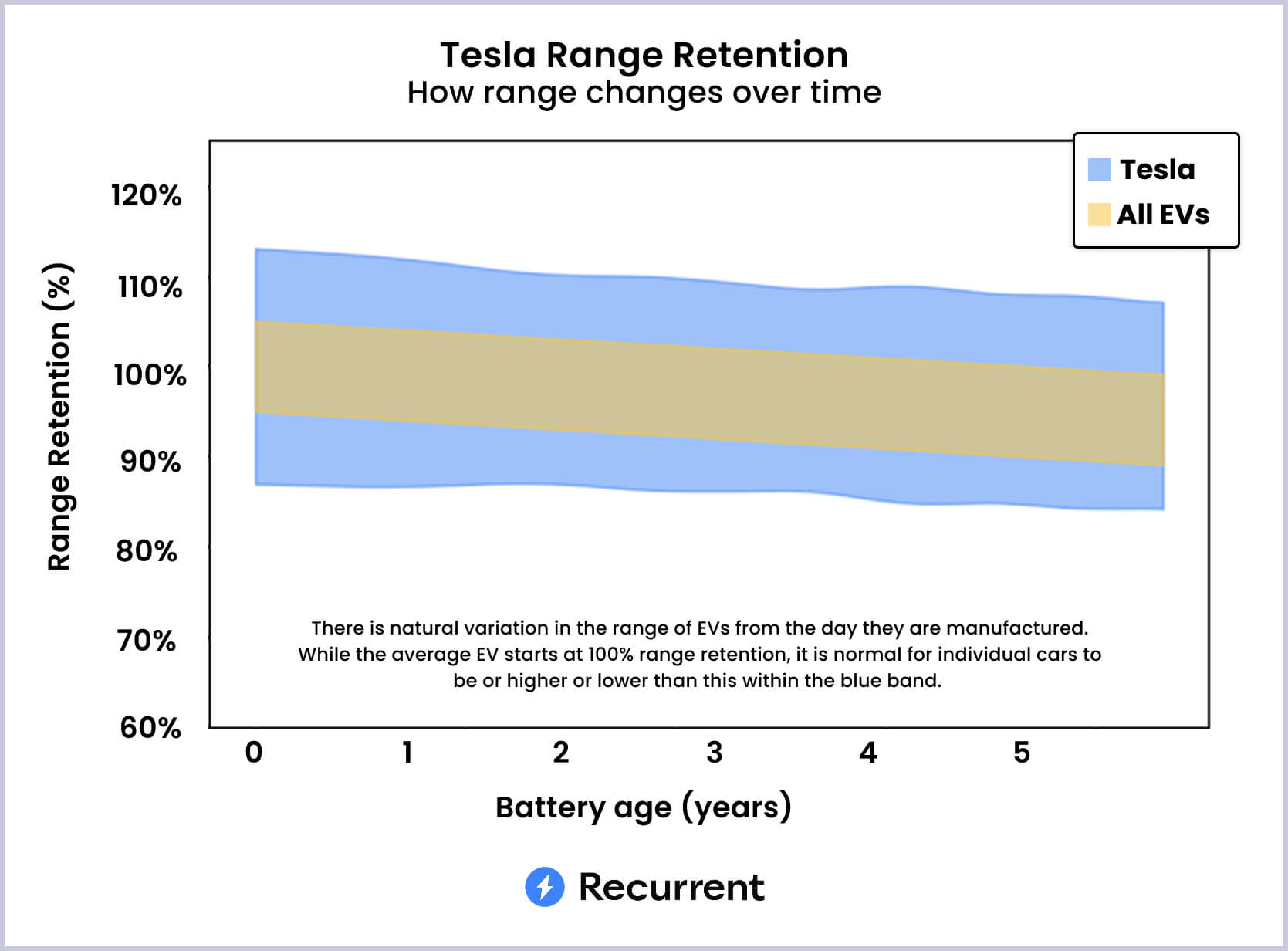




All Teslas, including the Model 3, use lithium ion batteries. You can read more about how lithium ion batteries age in a research article on battery degradation.
As of October 2021, Tesla announced a change to all standard range batteries chemistry, going from nickel-cobalt-aluminum to lithium-iron-phosphate (LFP). This new battery chemistry has more sustainable components, reducing reliance on hard-to-mine cobalt, and should allow Tesla to keep base trim prices down.
The battery size, or battery capacity, for a Model 3 ranges from 50 - 82 kWh depending on trim and year. A 50 kWh battery is slightly below industry standards for a modern electric vehicle, but was pretty large in 2017 when the Model 3 debuted. On the other hand, an 82 kW battery is still on the big side, even today.
Tesla offers an 8 year, 100,000 mile warranty (120,000 miles for the Long Range or Performance trims), over which the battery should retain at least 70% of its original capacity. The warranty is also transferable to new owners.
This page shares Model 3 data collected from over 6,000 cars across the United States. Each of the 14 million miles driven helps to draw a picture of the driving experience. We polled our community to find out what they love and what they could leave with their vehicles.
Most liked features:
"Except for a mortgage and marriage license, the best purchase I ever made."
"It’s basically like Christmas morning when updates come in. This is the first car I have had that improves with time."
“The Auto Pilot feature is IDEAL for sitting in stop & go traffic and takes all the stress out of the commute.”
Room to improve:
"Poor fit & finish. Compared to Audi or BMW, not even close."
“Paid for full self driving almost 3 years ago, still do not have it”
“The automatic Windshield wipers aren't quite as intuitive as I would like. Would prefer they be on a stalk and I turn them on or off. Same with high beam.”
The Green Score for the Model 3 is great. It is an all-electric car with no tailpipe emissions. If you were to buy a used Model 3, you could be even more environmentally conscious: every used car purchase means one fewer new car that needs to be produced and shipped. Finally, you can really up your green game by powering your EV with renewable energy for the ultimate clean machine.
Not many cars in the last 20 years have received the same level of attention and scrutiny as Tesla’s Model 3. Like the child of a celebrity, it was announced with great fanfare and had its upbringing carefully documented and editorialized. In 2016, the year it was previewed, preorders reached 325,000 and rumors have it that 100,000 reservations were made in the first 24 hours. By the end of 2019, more than 300,000 were delivered and Tesla Model 3 was the best selling EV in the world.
The Model 3 has helped to change the way that people think about electric cars. While not exactly cheap, its presence has meant that EV options are no longer limited to luxury cars. Selling for only $35,000, with federal tax incentives available in its early days (they have since expired), the Model 3 offered a lot of performance and excitement for the price, with a top speed of 130 and 0-60 speed of 5.6 seconds.
The Standard Range Model 3 - the one that hit the market at $35,000 - was taken off the website in late 2019 and then completely decommissioned in 2020. The Standard Range trim, as opposed to the Standard Range Plus, offers slightly lower range and limits certain other features such as 0-60 time and top speed via software. After price increases in 2021, the price of a new Standard Range Plus is now $43,990 - almost $9K more than the original.
When it comes to Teslas, a lot of the important performance and battery information is encoded in the trim level, and even then, the same trim may have different rated range across years, software packages, or even wheel size. Below is a chart of the Model 3 trims in the Recurrent community, along with the full spectrum of observed ranges (at 100% charge) for each.
The Tesla Model 3 is an all-electric, battery powered car. All the energy is electric and delivered via a high voltage, lithium ion battery. Lithium ion batteries have high power density, stand up to frequent charge and discharge cycles, and generally hold their capacity well over many years.
Recent news in October 2021 is that Tesla will be changing the chemistry in all standard range batteries to lithium-iron-phosphate (LFP) chemistry, instead of nickel-cobalt-aluminum. This should help maintain stable pricing and make sourcing battery materials simpler.